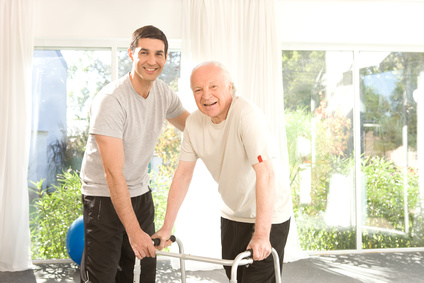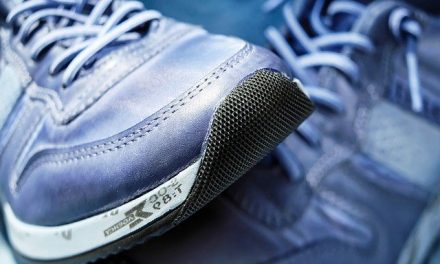Walker fit (or fitting a cane) to a person is your loved one’s musculoskeletal health. Do you see the picture above? It’s nice. Has a handsome young man with a smiling, older gentleman. But if the nice young guy doesn’t do his research, he’s going to cause his dad some unnecessary pain. A walker height too low will cause the person to be unstable and at a fall risk. It also puts a lot of pressure on the shoulders. A walker too high creates pain in the wrists, elbows and again, the shoulders. This is even moreso the case when using a cane.

How to Properly Fit a Walker or Cane:
- On the outside of your hand/wrist you have a bony bump that is called the Olecranon Process.
. - Have your loved one stand in the upright position that is normal for them (if loved ones stoop naturally, let them). While they are standing tell them to relax their arms at their side.
. - As your loved ones arms hang down to their side, the top of their cane or walker should be level with their olecranon process.
. - Another way to look at it is that the hands are angled to about 20 degrees.
Look at the picture again we saw earlier (below). Now that you know how to properly fit a walker or cane, what is wrong with this picture?

fotolia/© iceteastock
His walker fit makes you want to run over and adjust it for him. Do you see how much weight he is putting on his shoulders? Not good. Especially for men who typically have a higher incident rate of rotator cuff injuries.
Making sure your loved one has a proper fit is important in maintaining their overall musculoskeletal health as well as preventing further injuries. Armed with the right information, you can easily and quickly adjust the height of a walker for your loved one. Once you know how to adjust for walker height, you will cringe when you walk through the store and see someone using a cane or walker that is way off. It’s just from lack of knowledge. So if this is helpful to you, please share. Let’s help each other help our loved ones.
(PS–If you are using a cane, the proper side is to use it on side of the strongest leg.)






